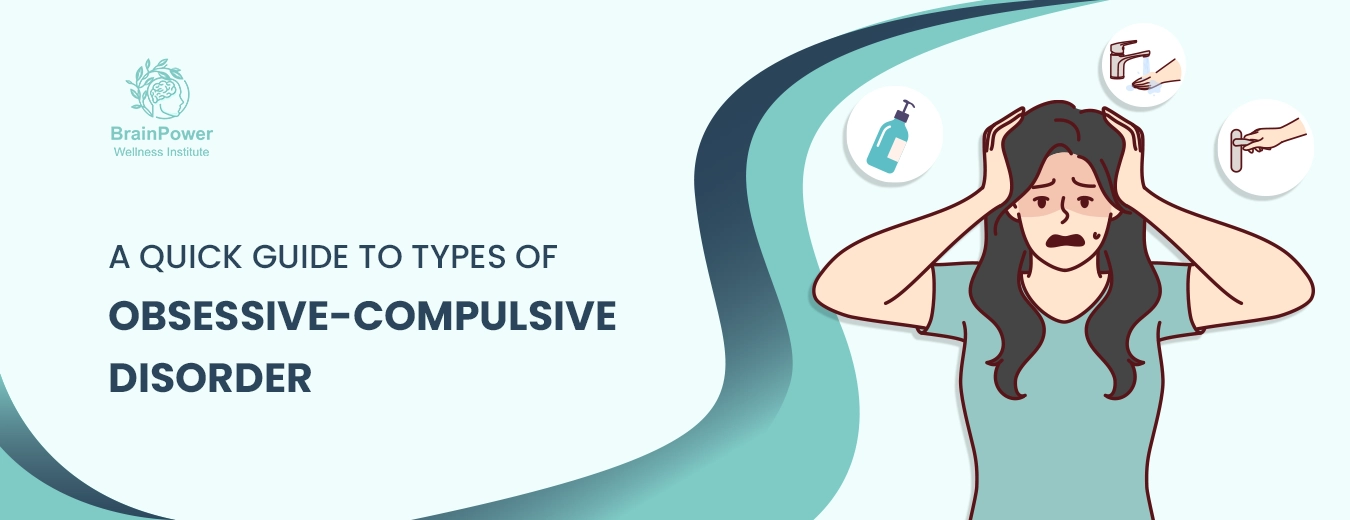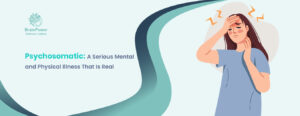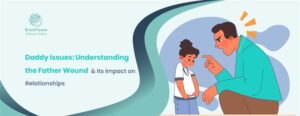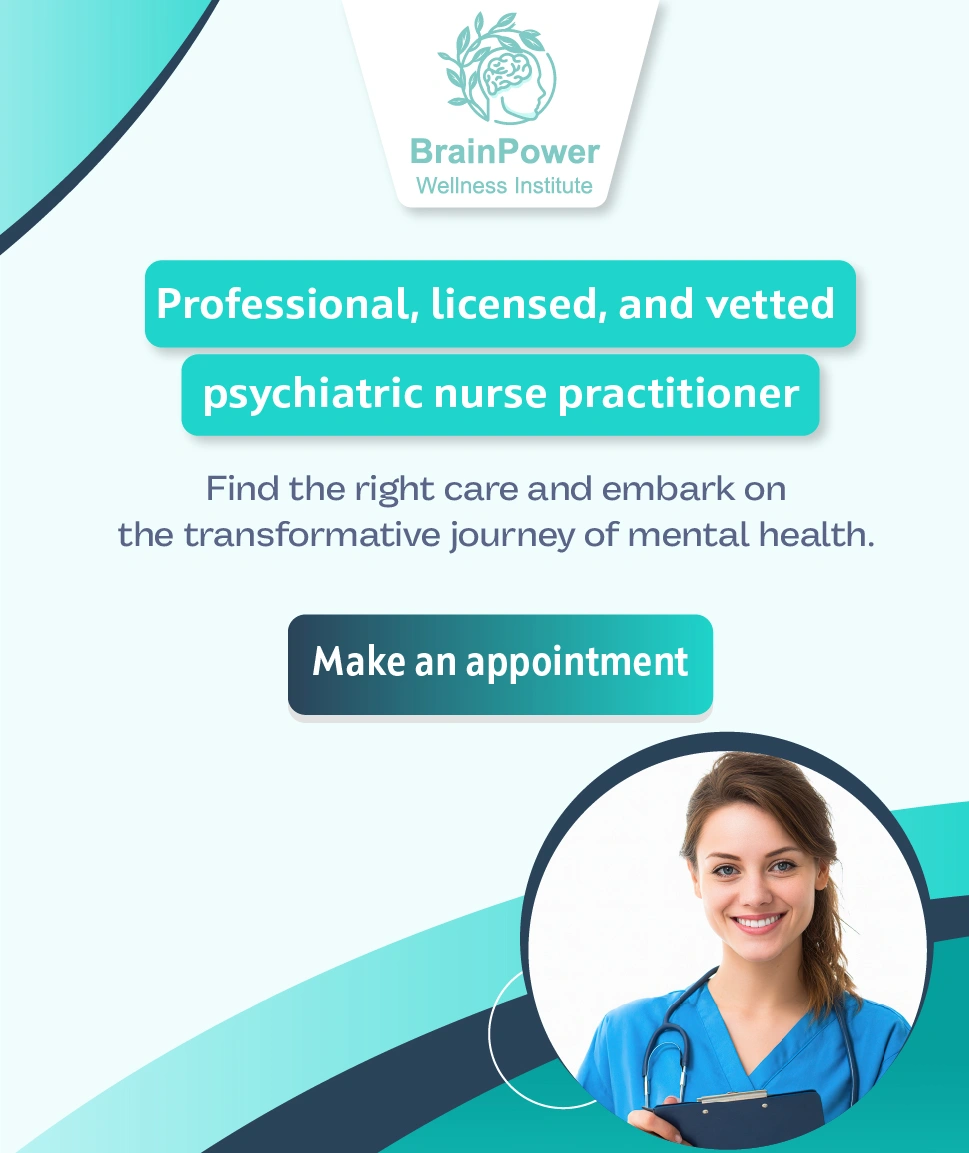Obsessive Compulsive Disorder is an abnormal mental health condition that involves obsessions and compulsions. Persons with OCD are unable to focus on their essential life activities. Their brain remains occupied with undesired thoughts. Moreover, if you want to know more about the types of obsessive-compulsive disorder, read this article. You will surely get absolute knowledge regarding the types of OCD disorders and OCD subtypes.
What type of disorder is OCD?
Obsessive-compulsive disorder is a common, but complex anxiety disorder. This disorder involves the occurrence of repeated thoughts and behavior. Compulsive behaviors are those that occur in a repeated manner. OCD can affect every individual. However, this disorder mostly affects the children. The onset of this disorder mostly occurs in childhood. Affected persons are mostly disturbed by unwanted thoughts and emotions. Cleaning their hands, rearranging the furniture, and thinking about a certain thing numerous times are the major compulsive behaviors. Ultimately, they face difficulty in regulating their daily life tasks.
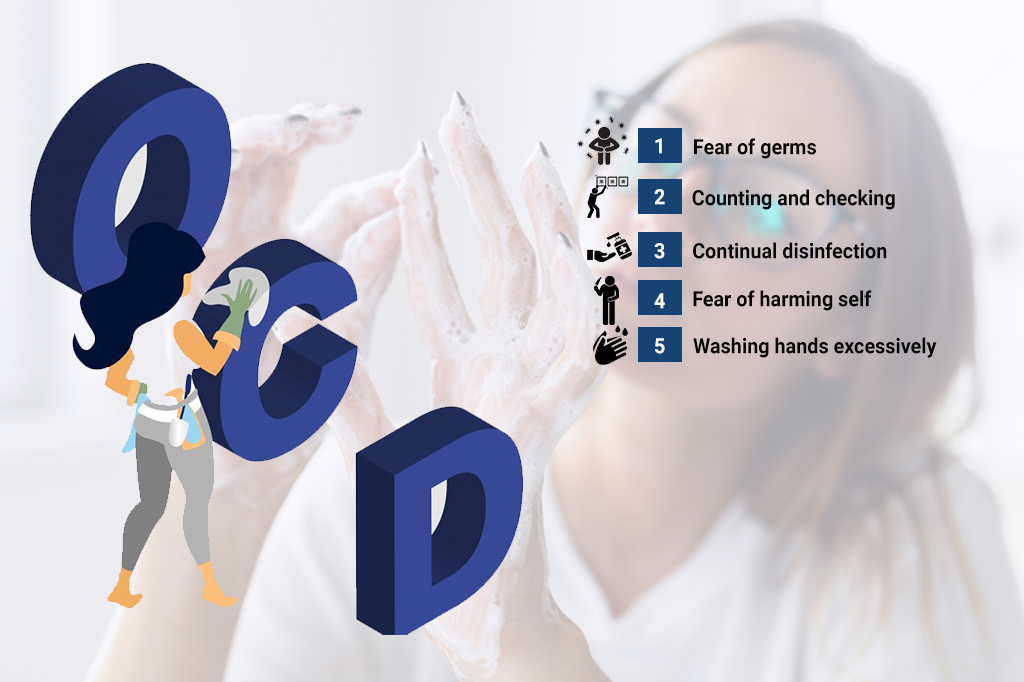
Pure Symptoms of OCD
The extent of obsessions varies according to each individual. However, the most common obsessions involve:
- Fear of contamination
- Undesirable religious thoughts
- Fear of self-harm
- Intensity in fear of losing someone
- Unwanted sexual drive
- Thoughts regarding violence
- Forgetfulness
- Intensity in emotions
- Sudden anger
- Extreme sadness or worries without any apparent reason
Read More: OCD Symptoms Checklist: Causes and Treatment
Diagnosis of OCD
The diagnosis of OCD is based on the present body symptoms. Different types of obsessive-compulsive disorder can easily be diagnosed. Moreover, skilled and experienced mental health experts can only diagnose the accurate OCD symptoms accurately. However, the perfect evaluation involves obsessions and compulsions. Furthermore, two widely performed diagnostic tests include:
Physical evaluation
A psychiatrist usually performs the physical examination test to diagnose the different symptoms and related complications.
Physiological evaluation
In this evaluation, a psychiatrist usually asks certain questions from the patients. Then OCD patients share their feelings and thoughts. Ultimately, a therapist can better identify the main reasons for the obsessions and compulsions. Moreover, therapists also communicate with the family members or friends of affected individuals.
Are there different types of OCD?
There are different common types of OCD disorders. However, the most common types include:
Real events OCD
This type involves the association of compulsive behavior with previous life events. Although the years have passed, the person still thinks about the previous era. Moreover, affected persons also feel the same or undesirable hesitation on previous life things. Likewise, fear and doubts also arise in the mind which can increase stress. OCD types compulsions patients remain in their thoughts and think that they have done something bad to any person in the past. So the process of rewinding the previous life event continues in their thoughts. However, if they find the corresponding person, they also confess what and why they have done previously.
Contamination OCD
OCD patients are more concerned about their hygiene. Therefore, they do compulsive behaviours including cleaning hands or things over and over again. Moreover, they also have a fear of getting any lethal infection. Due to their fear, they usually avoid public washrooms to prevent the contamination of germs. Similarly, they clean their domestic products multiple times. Whenever they sit free, they keep thinking about the contamination and ways to prevent it.
Organization OCD
As the name indicates, OCD patients remain stressed regarding the effective organization and symmetry of different things. They want each domestic thing in the perfect place without any asymmetry. Moreover, if they are in office, they also want to keep all the things in one place on the table. If they fail to do this symmetrical organization, they start taking stress or anxiety. When they appropriately organize things, their anxiety can be recovered.
Inspection OCD
OCD patients suffering from this type most often feel insecure. Moreover, they also remain in fear due to theur carelessness. They think that they can cause any damage to themselves. Moreover, they check the locks of doors numerous times. This kind of mysterious behavior is also present in inspection OCD patients. Similarly, if females are affected, then they check multiple times that the stove is on or off.
Relationship OCD
OCD patients always face complications in making bonds with their loved ones. The rate of breakup is also greater among couples. Likewise, the OCD partners think about useless things. They wonder why their partner is expressing love or concern. They also asked questions from their partners regarding their previous love life.
Moreover, they always doubt their relationship and their partner’s feelings. This can raise questions regarding their bond and can lead to the breaking of their love bond. Such OCD patients remain in search of new partners without caring about the present one.
Aggressive OCD
OCD patients usually feel worried about the arising violent thoughts in their minds. They always develop the aggressive thoughts of others. They think that anyone can harm or kill them. Moreover, they also feel the intensity of their emotions. Likewise, intensity in their sexual thoughts also occurs. Likewise, different taboo, religious, and immoral concepts also appear in their mind.
Self-control OCD
Aggressive and hostile behavior is common in most of the OCD patients. They think that they can cause harm to others. Furthermore, they prefer to stay silent in public as they think that they can shout at anyone. Due to fear or concern about others, affected persons always prefer isolation instead of engaging in different social life activities.
Some more OCD subtypes
Different OCD subtypes which are associated with types of obsessive-compulsive disorder include:
Magical Thinking OCD
This OCD subtype involves magical thinking. They consider those things that never happen in reality. They fail to interpret the imaginary thoughts accurately. Moreover, their belief in illogical things is strong. They think that if they do not do a certain thing, something terrible will happen.
Just Right OCD
OCD patients think that their surroundings things are not accurate. To ensure accuracy, they perform different compulsive behaviors. Their main purpose of compulsion is just to make things right according to their preferences.
Hoarding OCD
This OCD involves the possession of different things. Such persons feel pleasure in collecting clothes, magazines, books, jewelry, and various other products. Their living space is often occupied with a stack of things. They feel stress in discarding them. People suffering from hoarding OCD usually experience more anxiety or depression.
Pedophilia OCD
This subtype of OCD involves sexual attraction toward children. Moreover, affected persons also feel anxiety or depression. Affected persons try to avoid eye contact with the children to prevent their attraction towards them.
Predominantly obsessive
OCD involves repeated obsessions and compulsions. But this subtype is devoid of any obvious obsession. Initially, different studies tried to reject this subtype. Approximately, 96% of OCD symptoms involve obsessions and compulsions. However, only 2% do not involve any apparent compulsive behavior. The obsessions of this type are usually inward as compared to the inward.
Perinatal OCD
This involves the onset of OCD in pregnancy. Perinatal OCD affects both females and the developing fetus in the womb. OCD can affect the normal brain development in children. Moreover, various other birth defects can also occur.
Body dysmorphic disorder
Persons suffering from this disorder remain unhappy with their physical personality traits. They most often point out the flaws in their personality. Furthermore, their compulsive behavior involves the seeing mirror multiple times.
Is OCD a type of anxiety?
Anxiety and OCD were considered the same in previous times. Both cause the development of an anxious state of the brain. However, different researches were conducted which then clearly stated that both are different. Both OCD and anxiety involve different changes in brain structure and function.
Although both anxiety and OCD involve stress factors, both conditions are quite different. The main difference lies in compulsive behaviors. Persons suffering from OCD and anxiety take stress about varied things. However, OCD patients do compulsive behaviors to avoid the stress. OCD patients have the fear of contamination and getting any severe medical infection. This fear can cause anxiousness in their brain.
However, there is no link of compulsion with the persons suffering from anxiety or depression. Anxiety is a broad term that involves different mental disorders. Anxiety disorders usually affect 18% of the US population. This condition involves persistent stress regarding numerous things. The most common symptoms of anxiety include nervousness, difficulty in breathing, trembling, shaking of hands, elevated cardiac rate, and blood pressure. Moreover, they just remain indulged in their anxious thoughts and emotions without doing any repetitive behavior. Therefore, both OCD and anxiety are somehow distinct.
Another major difference involves intrusive thoughts. Stress about losing jobs, failing examinations, or any other personal or financial hardship is common in people with anxiety or depression. However, persons with OCD are unable to identify their reason for stress or fear. They remain worried about those things that are not likely to happen.
OCD in Children
It is suggested that every 1 in 200 children in the USA is the victim of OCD. The onset of types of obsessive-compulsive disorder occurs at an early age. However, OCD can also occur in adults. Children also become habitual in doing different compulsive behaviors. They get addicted to cleaning and reorganizing things in a repeated manner. School-going children face difficulty in paying attention to their academics and fail to get good marks. However, adults suffering from OCD also lose the competitive capabilities to excel in the professional field. Scientists supported the different causes of obsessive-compulsive disorder. Furthermore, genetic factors are considered more responsible for causing this disorder. As OCD tends to run in families due to the transfer of genes among generations.
OCD Cycle
Obsessive-compulsive disorder involves the direct association between the following components:
- Obsession
- Distress
- Compulsions
- Relief from stress or any prevailing anxiety symptoms
Each person experiences OCD in different ways. However, the major goal of compulsion is to seek pleasure or relief from anxiety or depression. After completing one stage of compulsion, the person feels the urge to experience another cycle of compulsive behavior. However, this cycle can continue until the effective treatment is not applied.
Intrusive thoughts
Intrusive thoughts cause the initiation of the OCD cycle. These thoughts are usually negative and do not involve any apparent reason to occur. Moreover, intrusive or undesired thoughts also occur in the mind of normal persons. But the main difference lies in the way to deal with them. Normally people avoid intrusive thoughts and do not feel interest in them. However, OCD patients spend a lot of time thinking about the reason for intrusive thoughts. They start questioning their emotions and concepts. If they are unable to get an answer, then they start taking stress or anxiety.
Compulsions
Anxiety or depression becomes a reason to initiate compulsive behaviors. OCD patients usually try to ignore their stress factors. At first, they feel that they are successful in overcoming their stress or fear of something. But unfortunately, their relief from the stress is for a very short period. The same distressing feelings or thoughts again appear in their minds. They again initiate compulsive behaviors. This time, their stress or anger can get elevated as they are unaware of the main reason. Moreover, the emergence rate of thought is elevated. Therefore, a person gets stuck in this OCD cycle without an effective therapeutic procedure.

Treatment of OCD
To treat or prevent the symptoms of types of obsessive-compulsive disorder, different therapeutic procedures are used.
Medications for OCD
Medications were not suggested by physicians to treat this disorder in previous times. However, different medications are used nowadays. Some common medications include:
Selective Serotonin Reuptake Inhibitors
SSRIs were initially used as antidepressants. But now, these drugs are used to treat the OCD symptoms. OCD causes a chemical imbalance in the brain which in turn results in decreased levels of serotonin hormone. Selective serotonin reuptake inhibitors specifically function to elevate serotonin levels.
Antidepressants
OCD patients also experience anxiety, so different antidepressants or anti-anxiety medications are also suggested. Some major antidepressants include:
- Paroxetine
- Fluoxetine
- Zoloft
Buspirone is used to treat the symptoms of chronic anxiety. Likewise, other anticonvulsant drugs include pregabalin, seroquel, and gabapentin, etc.
Some other widely used medications include
- Citalopram
- Venlafaxine
- Sertraline
- Fluvoxamine
Cognitive Behavioural Therapy
This therapy involves effective communication between mental health experts and OCD individuals. OCD patients are unable to interpret the meanings of their thoughts and emotions. So talk therapist play a significant role in determining their underlying emotions and associated behaviors. This therapy will assist you in understanding brain functioning and the best ways to respond to certain signals accordingly. Furthermore, this therapy also focuses on strategies to overcome negative or toxic thoughts.
Exposure Therapy
As the name suggests, this therapy involves the exposure of patients to the source of fear or stress. To suggest an effective treatment, their response to the stimulus fear is determined. This therapy is also known as the response prevention therapy. The treatment based on the exposure is directly linked with habituation. Instead of showing compulsive behavior, the person becomes addicted to that recurrent situation. Exposure therapy makes them habitual in avoiding repeated stimuli due to multiple times exposure.
Read More: Decrypting the Relationship: Does OCD Cause Depression?
Electroconvulsive therapy
This therapy involves the generation of a few mild seizures to treat the disorder’s symptoms. In this therapy, an electric current is passed through the brain of the patient. When other treatments do not generate the desired outcomes, electroconvulsive therapy is preferred. However, the efficiency is different for each individual. The main purpose of this treatment is to significantly alter some brain changes, structure, and function. However, in most of the cases, different side effects can also occur. Catatonia, severe depression, treatment-resistant depression severe cases of mania can be treated by electroconvulsive therapy.
Deep brain stimulation
Deep brain stimulation is also a widely used therapy to treat this disorder. This treatment involves electric stimulation of the brain and electrodes are placed in the deep areas of the brain. OCD, Parkinson’s disease, schizophrenia, and various other neurocognitive issues can be easily treated by deep brain stimulation. On both the right and left sides of the brain, small holes are developed.
Through the holes, electrodes are then implanted in the brain. Furthermore, electrodes are placed in three different regions of the brain which include the thalamus, subthalamic nucleus, and globus pallidus. Moreover, the stimulator is placed under the chest which is connected to the electrodes. The stimulator is specifically involved in the transmission of electric pulses. The impulses play a role in the regulation of involuntary tremors, convulsions, and various other associated symptoms.
Deep TMS therapy
This therapy involves the use of a magnetic field to stimulate the brain cells. This treatment is safe and involves a noninvasive approach. One of the major benefits of this therapy is that it does not involve the use of anesthesia. Moreover, deep TMS therapy doesn’t cause any side effects.
Last Thoughts
Obsessive-compulsive disorder involves the repeated occurrence of undesired thoughts and concepts in the mind. OCD can affect men and women. Moreover, this disorder can also affect the brain development in children. There are different types and subtypes of OCD. However, cognitive behavioral therapy and medications are useful for treating the types of obsessive-compulsive disorder. Brainpower Wellness Institute experts are professionals in providing the best mental health services for different types of obsessive disorders. So you are just one step away from the mental well-being.
